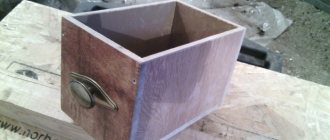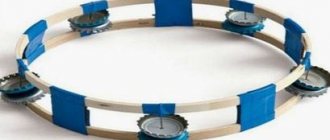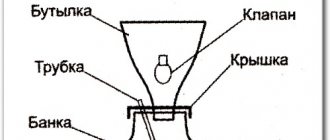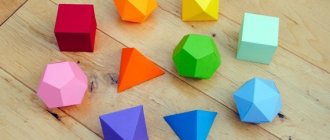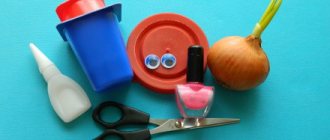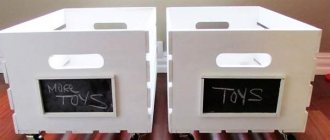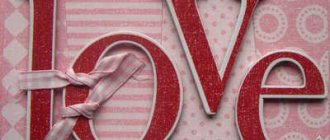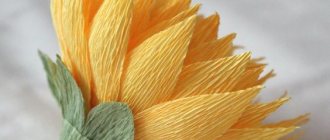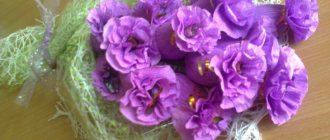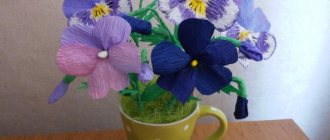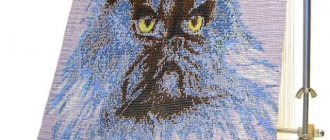Paper boards - cheap and cheerful!
Wooden planks are needed for many things. They are used to lay floors and ceilings in houses, make doors, jambs and frames, and make furniture. But such building materials are not cheap.
It turns out that papier-mâché, or, translated from French, “chewed paper,” is an excellent substitute for wood. Marvelous! And how can paper boards compare in strength to natural wood?
In fact, papier-mâché building material:
- has less weight;
- does not crack when fastening boards with nails or self-tapping screws;
- does not warp from the sun and water;
- resists chipping;
- paint coatings are used more economically;
- doesn't creak.
Papier-mâché in layers
Most people are familiar with the method of gluing scraps of paper in layers. In this way, you can make not only small objects, but also door jambs or seats for stools. But still, this method is labor-intensive enough to be used for the production of the necessary building materials for the construction of housing in full.
Although a very beautiful and durable floor is obtained by gluing pieces of kraft paper in this way with PVA glue. This method can be used to renew an old floor.
If housing is being built from scratch, then there is an option. You can really get a durable and beautiful floor if you put the first layer of kraft paper on a metal mesh laid directly on the ground.
The top of this floor is covered with stain and varnish. Although you can use paint or cover it only with varnish.
A paper floor is not fantasy, but reality.
Making paper floors is quite labor-intensive, but the results are worth it. It is important to understand the technology and you can create an unusual coating that will have no analogues anywhere else. In an era of shortages of building materials and tight budgets, craftsmen came up with an original way of creating paper flooring.
What do you need for work?
Paper
To make a floor with your own hands, use craft paper (packaging) or paper wallpaper. Both materials are cheap and available. Used packaging bags can be collected for a certain period of time and then used. For wallpaper coverings, old products that have turned yellow and aged right in the rolls are suitable.
Kraft paper is used to create an imitation of natural stone. To do this, it is torn into large pieces, crushed, creating bizarre kinks. Before use, the pieces are placed under a weight to slightly straighten them.
Wallpaper is applied directly in strips from rolls, if the pattern allows. Sometimes canvases are combined by color or texture. Thick, smooth products with imitation wood patterns are suitable for flooring. The end result is a homemade laminate.
To fix paper fragments, you need PVA, which is used to glue furniture parts together. For 5-6 sq.m. the surface to be glued will need 1 kg. The glue is diluted with water 1:1.
Advice! To check the quality of the glue and purchase the optimal composition, take 1 package and check it on site with the wallpaper (packaging) that will be glued.
When using PVA, it is important to ensure that the paper adheres firmly and that there are no stains from bleed-through glue.
Varnish
The varnish fixes the paper picture and protects it from damage during use. To create the original coating, a colorless parquet composition is used. Nowadays, preference is given to water-based products. They do not emit a strong specific odor and dry faster. However, some craftsmen recommend using ship varnish. It provides the greatest reliability and durability of the coating.
stain
A paper floor is covered with stain to give it a certain color scheme and enhance the imitation of wood. The color of the pigment composition is chosen based on personal preferences and the desired result. Sometimes it is enough to buy colored varnish and not use stain.
Building material made from paper pulp
This method is based on casting parts from a pulp prepared on a paper basis. Previously, this mass was made exclusively from the base. The paper was soaked, ground, and the resulting pulp was pressed into a product.
Today, craftsmen suggest adding to papier-mâché, in addition to the adhesive component, gypsum, chalk powder, cement, and sifted wood ash. These ingredients increase the strength of the parts.
By mixing paper pulp with substances that counteract the effects of water, or coating finished items with them, waterproof products can be made from papier-mâché.
If it is necessary to create a fire-resistant material, use office glue, which has a second name - “liquid glass”.
Preparing the base for paper floors
Before starting work on arranging the floors, the old paper covering is removed. To obtain reliable and durable floors, certain requirements are imposed on the bases: • they must be smooth and have good adhesion; concrete, cement and plywood bases are considered the best; • skirting boards are removed; • if there are significant defects, the bases are puttied; the putty contains water-based panel varnish and chalk; • the smooth surface is not entirely suitable for ensuring reliable adhesion of the paper to the base, so it is subjected to light processing with a grinding machine; • before gluing paper layers, the surface is thoroughly cleaned.
Papier-mâché according to Winzer
This method appeared a very long time ago. But it was only recently that it was “discovered” again. You can use any waste paper to make papier-mâché boards: newspapers, cardboard, egg trays, notebooks, and the like.
All this is crushed and filled with water.
Periodic stirring and heating the mass speeds up the process of soaking the waste paper.
Then the mass is squeezed out and ground well in a mortar - as written in the recipe. But today craftsmen prefer to use a meat grinder or blender at this stage to reduce labor costs.
After squeezing the mass well through a linen cloth, the lumps are dried in the open air or in the oven.
Then it is recommended to grind them again by grating them on a kitchen grater. The flakes should feel like cotton.
Now an adhesive base, for example, flour paste, is added to the mass in small portions and the “dough” is kneaded.
Having spread this mass on the table like a donut, sifted hardwood ash is poured into the middle. Moreover, you need to take three times more filler than the resulting paper mixture. The ash is moistened with water, and the whole thing is thoroughly kneaded again with your hands.
Winzer advises grinding the mass in a mortar again, and then immediately starting to use papier-mâché. In some cases, you can preserve the material by putting it in glass jars with tight-fitting lids. The containers with the mixture are stored in a cool place where sunlight does not penetrate.
adfave
Anyone who has done renovations will definitely say that it is very expensive. Not everyone has the financial means to make very good repairs. And I really want to live in a cozy, beautiful and renovated apartment! What to do? You can do something with your own hands from inexpensive and affordable materials. And at the same time get a great result.
What can be done and how?
From scrap materials you can make a floor that will be very similar to a floor made of artificial stone. This floor is actually made of paper.
Here's what you need for this:
· a roll of wrapping paper or a stack of brown paper bags
· PVA glue
· wood varnish for interior work
· bucket
· roller
· polyurethane paint
What should we do with all this?
Here's what: you need to know that such a floor can be made on plywood, concrete and plaster. Where should I start? You need to start by removing the old covering and cleaning the floor thoroughly. It is necessary to remove all the glue and remove the baseboards.
If the floor is uneven: there are holes and some irregularities, then they must be repaired. It is important that the floor is not perfectly flat, then the paper will stick very well. To do this, you need to go over the floor with a grinding machine.
What to do next:
· You need to tear the paper into large, uneven pieces. Then you need to crush it a little: it will look like real stones
· then you need to prepare a special mixture. To do this, mix water and glue in a 1:1 ratio. This mixture is prepared if you have a concrete floor. If you have a wooden floor, then you will need to prepare a completely different mixture: you need to take 3/4 water and 1/4 glue.
· Then you need to apply this mixture to the floor, after that you need to put a piece of paper on top, and then you need to anoint this paper on top with the same mixture.
· This should be done with the entire floor area. It is important to note that when the paper dries, it will shrink slightly. Therefore, you need to make sure that the pieces of paper overlap each other a little.
· After the entire surface of the floor is covered with such pieces of paper, you need to wait until everything dries thoroughly. Then you will need to varnish everything.
· If you like the color of the paper, then you need to cover everything with colorless varnish. To apply the varnish evenly to the floor surface, use a roller.
· The next step is to cover the floor surface with transparent polyurethane paint. This is done to ensure that the floor is strong and the varnish does not come off from impacts and scratches. To do this, you need to apply several layers of this paint to the floor. Allow each layer to dry thoroughly before you apply subsequent layers.
· You can paint pieces of paper in different colors. To do this, you need to use different shades of varnish. It will be very beautiful and unusual.
Don't be afraid of repairs! Feel free to get down to business! Be patient and don’t be afraid to use your imagination! I wish you success!
Papier-mâché boards
The most convenient way to produce building materials is by casting in molds. For better removal, the bottom and walls of the mold are lined with dry newspapers or polyethylene. After filling the mold, you need to press the mass well on top so that there are no air voids inside. Excess liquid that comes out is removed. Then the workpiece is removed and left to dry. This process is reminiscent of making sand cakes.
Papier-mâché boards should not be dried using heat, as this may cause cracks to form in the workpiece. If this happens, the cracks are re-covered with mass and dried again.
After drying, uneven surfaces can be easily removed with sandpaper or a file. The board is easy to drill, saw, and nail down. Any type of paint coating adheres to it perfectly.
When making a floor from this mass, you can immediately lay it on a metal mesh covered with cardboard. This will speed up the process. But the still wet mass on top needs to be carefully leveled by pressing with something smooth. Remove the press before the mass dries.
